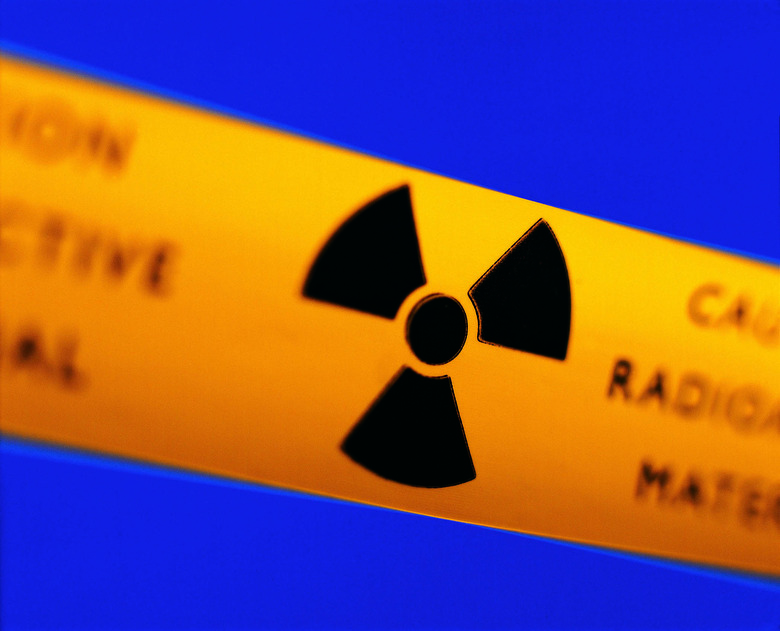Somatic & Genetic Damage Caused By Radiation
The energy in certain forms of radiation can damage living tissues; although the destruction occurs largely at the cellular level, the damage from severe exposure may be plainly visible, taking the form of burns and various types of organ failure. Although harm can occur to an exposed individual, genetic damage from radiation for subsequent generations is minimal for human beings.
Types of Radiation
Types of Radiation
Many forms of radiation, such as sound waves and visible light, lack the energy necessary to cause cell damage. However, X-rays, short-wave ultraviolet and the products of radioactive decay are called ionizing radiation because their energy is sufficient to remove electrons from atoms. It is these forms of radiation that are particularly hazardous to human health.
Radiation Levels
Radiation Levels
Small amounts of ionizing radiation from rocks and minerals and the sky are always present; this is called background radiation and life has long since evolved ways to cope with it. When radiation become significantly greater than background levels, the damage can overwhelm a cell's natural defenses, leading to somatic and genetic damage.
How Radiation Damages Tissue
How Radiation Damages Tissue
When ionizing radiation strikes the atoms in a substance, some of its molecules may break apart or become stuck together in the wrong places. Proteins and other biological molecules may have many thousands of atoms arranged in complex structures; damage to them can result in the breakdown of a cell's normal functions.
Somatic Damage
Somatic Damage
An individual suffers somatic radiation damage when significant amounts of tissue are affected. According to Jefferson Laboratory, a short-term dose of 200 to 300 rads can result in sunburn-like injuries to the skin with accompanying hair loss. At doses over 1,000 rads, the gastrointestinal system suffers upset, including nausea, electrolyte imbalance and other symptoms. In excess of 5,000 rads, the nervous system undergoes shock, leading to confusion, loss of coordination or coma due to internal bleeding and pressure in the brain. Delayed, longer-term somatic effects include the possible development of tumors, cancer and cataracts.
Genetic Damage
Genetic Damage
Although ionizing radiation can damage DNA, genetic abnormalities are not passed on to the next generation for human beings at any significant rate. According to Princeton University, only a few radiation-caused genetic disorders are believed to occur per million live births. However, if a pregnant woman is exposed to radiation, the developing tissues in the fetus are vulnerable, particularly in the brain and nervous system; exposure may lead to mental retardation and other serious conditions. For this reason, the Food and Drug Administration recommends limiting medical X-rays and nuclear medicines for pregnant women.
Cite This Article
MLA
Papiewski, John. "Somatic & Genetic Damage Caused By Radiation" sciencing.com, https://www.sciencing.com/somatic-genetic-damage-caused-radiation-13458/. 24 April 2017.
APA
Papiewski, John. (2017, April 24). Somatic & Genetic Damage Caused By Radiation. sciencing.com. Retrieved from https://www.sciencing.com/somatic-genetic-damage-caused-radiation-13458/
Chicago
Papiewski, John. Somatic & Genetic Damage Caused By Radiation last modified August 30, 2022. https://www.sciencing.com/somatic-genetic-damage-caused-radiation-13458/
